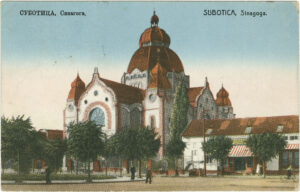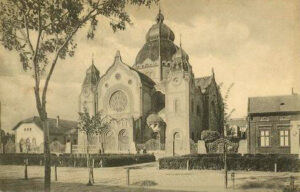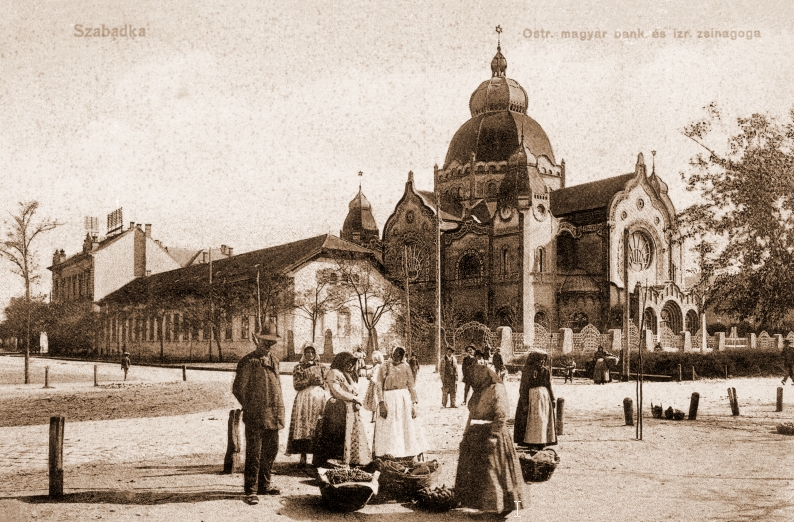
The first Jewish families settled on the outskirts of Subotica in 1775. Less than ten years later, they were permitted to form their own religious community.
Before the end of the 18th century, 13 families had official status in the city and that’s when the first synagogue was built. Still rigorous and restrictive laws against Jews, limited their rights and choice of occupation. However, the community was slowly developing.
At the beginning of the 19th century, 43 Jewish families lived in Subotica, the first rabbi was appointed. After the Austro-Hungarian settlement in 1867, the Law on the Emancipation of the Jews was adopted. It was short and to the point: “In the exercise of civil and political rights, the Jewish population is declared equal to the Christian population.” After these positive events, the rapid inclusion of Jews in the economic, cultural, political and sports life of Subotica began.
In the city at that time, there was a synagogue, a mikveh (ritual bath), a Jewish orphanage and a cemetery. With the help of well-to-do members of the Jewish community, a great synagogue was built in 1902. The Jewish hospital was built in 1920. In this period, a large part of the city’s industry and commerce was in the hands of Jews, but with the beginning of World War I, the era of rapid growth ended, but the community continued to develop even in the interwar period.

Nazi Germany attacked Yugoslavia on April 6, 1941. Bačka region was occupied by Hungary and after that it was considered an integral part of that country. In the beginning, Jews were not taken to concentration camps in large numbers, but men were taken to forced labor camps – to do hard and dangerous jobs on the Eastern Front and in eastern Hungary. After the German troops entered Hungary on April 19, 1944, a decision was made to “cleanse the country of Jews”, and its implementation began a few days later. Jewish families were kicked out of their homes and driven into an improvised ghetto immediately after the German occupation, and no later than May 10, 1944. The Subotica ghetto was located near the freight station and was exposed to the danger of air raids.
One of the saddest days for Subotica Jews is June 16, 1944. On that day, the Jews of Subotica were herded into cattle cars and sent to Auschwitz and other Nazi death camps throughout Europe.
The number of victims in the “Directory of Subotica Jews Victims of the Fascist Occupation 1941-1945” is only 2,006 persons. However, the exact number of those who were mobilization to work units and deported is 6,105 Jews or persons who were considered Jews according to racial laws. Of them, 1,065 (17.44%) returned, and 5,040 (82.56%) died.
At the end of the 40s of the 20th century, most of the survivors immigrated to the newly formed Jewish state, Israel. At that time, there were about 250 members left in the Subotica Jewish community, as many as there are today.




